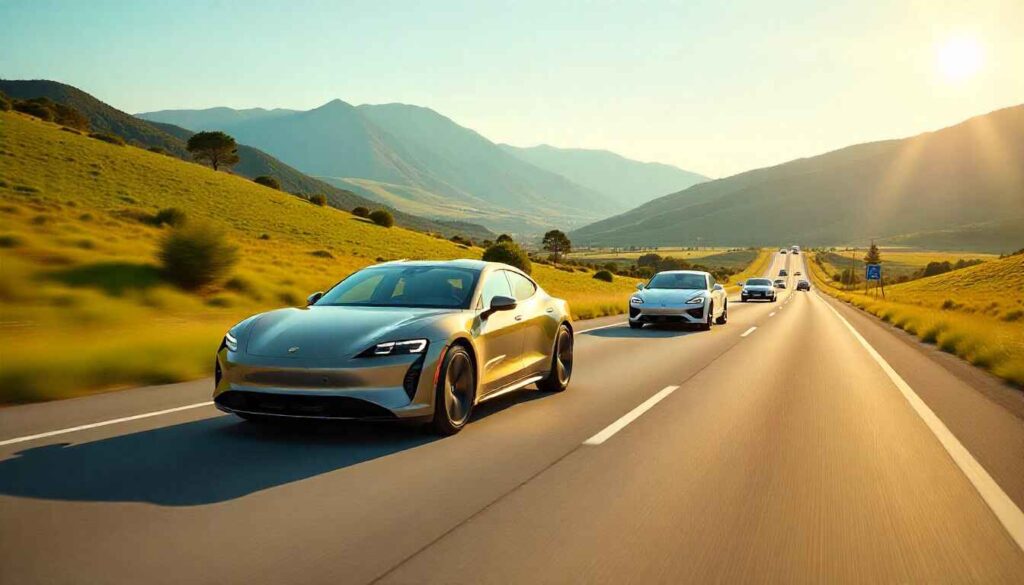In recent years, electric vehicles (EVs) have dominated headlines as the future of clean transportation. Yet, while EVs continue to grow steadily, a surprising trend has emerged in the U.S. auto market: hybrid cars are booming again. From Toyota Priuses to plug-in hybrid SUVs, American consumers are once again turning their attention to this once-overlooked category. But what’s behind this renewed surge of interest in hybrid vehicles?
Let’s dive into the reasons why hybrid cars are making a strong comeback in the United States.
1. EV Infrastructure Still Has Gaps
Electric vehicles are sleek, silent, and zero-emission, but there’s a catch — charging infrastructure in the U.S. still has a long way to go. While urban areas may have charging stations on every corner, rural communities and small towns often lack the infrastructure to support a fully electric lifestyle.
This is where hybrids shine. They offer the fuel efficiency and eco-friendliness people want without the anxiety of running out of power. Since they use a combination of gas and electric power, drivers don’t need to worry about charging stations or long charging times.
2. Rising Gas Prices
Every time gas prices spike, American consumers start looking for ways to save at the pump. In 2024 and 2025, fuel prices saw fluctuations due to global tensions, supply chain issues, and shifting OPEC policies.
Hybrids provide a practical middle ground: better fuel economy than traditional gasoline cars but without the full commitment or price tag of an EV. A typical hybrid can get 40-60 mpg, saving drivers hundreds — even thousands — of dollars annually.
3. Lower Purchase Costs Than EVs
EVs tend to come with higher price tags, especially for models with longer range and better features. Although tax incentives are available for electric cars, they don’t always apply to every model or income bracket.
In contrast, hybrids are more affordable upfront. Many models are priced closer to their gas-powered counterparts, making them appealing to budget-conscious buyers. Consumers who want eco-friendly options without breaking the bank find hybrids to be a sweet spot.
4. Improved Hybrid Technology
Gone are the days when hybrids were sluggish or had weird designs. Modern hybrids — like the Toyota RAV4 Hybrid, Honda CR-V Hybrid, and Ford Maverick Hybrid — combine performance, style, and fuel savings. Manufacturers have drastically improved hybrid drivetrains, making them more responsive, durable, and efficient than ever before.
Additionally, plug-in hybrids (PHEVs) are giving consumers even more flexibility. These vehicles can drive 20–50 miles on electric power alone — perfect for daily commutes — and switch to gas for longer trips.
5. Consumer Skepticism Toward Full EVs
Some U.S. consumers remain hesitant about transitioning fully to electric. Concerns about battery lifespan, charging logistics, resale value, and cold-weather performance still linger.
Hybrids feel familiar. They don’t require behavior changes like remembering to plug in the car or mapping out charging stops. For many Americans, hybrid vehicles offer an easier transition into greener driving — especially those living in colder regions or with unpredictable power access.
6. Automakers Are Betting Big on Hybrids
Another big reason for the hybrid resurgence? Automakers are doubling down on hybrid models. While companies like Tesla focus solely on EVs, traditional manufacturers such as Toyota, Ford, Honda, and Hyundai have rolled out hybrid options across nearly every vehicle category — sedans, SUVs, pickups, and even minivans.
Toyota, for example, expects to sell more hybrids and plug-in hybrids in 2025 than ever before. Ford’s new Maverick Hybrid has been such a hit that it’s become one of the best-selling small trucks in the U.S.
7. Government Incentives and Fuel Regulations
The U.S. government is pushing toward fuel efficiency and reduced carbon emissions. While EVs benefit from tax credits, many hybrids — especially plug-in hybrids — also qualify for incentives depending on the state and model.
At the same time, fuel economy regulations are pushing automakers to increase average fleet mileage. Offering more hybrids helps them meet those targets without going all-in on battery-powered EVs.
Final Thoughts
The return of the hybrid isn’t just a blip — it’s a reflection of consumer preferences, infrastructure challenges, and economic realities. As the U.S. slowly transitions toward full electrification, hybrid cars offer a practical, affordable, and reliable stepping stone.
Whether you’re a daily commuter tired of high fuel bills or a cautious buyer not ready for full EV ownership, hybrids may just be the perfect fit. One thing is clear: the hybrid isn’t just back — it’s here to stay.


